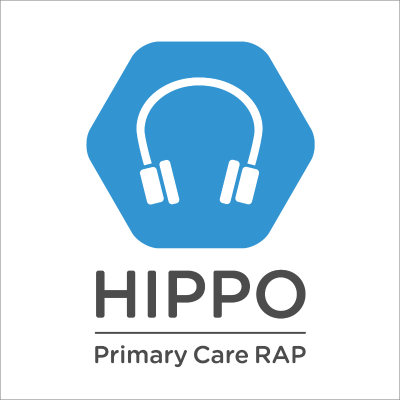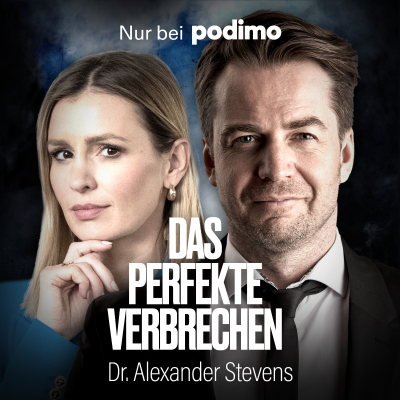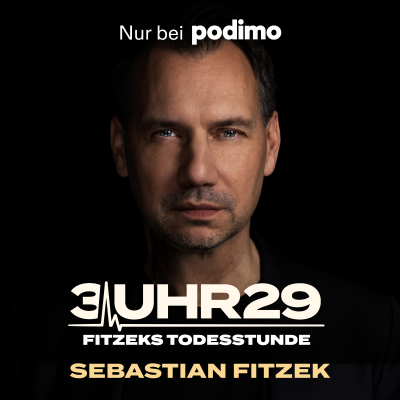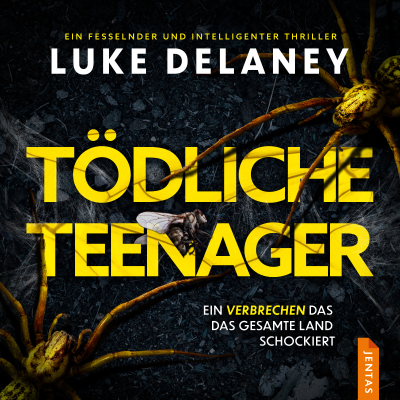
Primary Care RAP
Englisch
Gratis en Podimo
Kostenlos hören bei Podimo
Starte jetzt und verbinde dich mit deinen Lieblingspodcaster*innen
- Vertraut von über 1 Mio. deutschen Hörer*innen
- Über 1.000 lokale Podcasts und Shows – nur bei Podimo
- Keine Zahlung nötig
Mehr Primary Care RAP
Your work is hard; staying current shouldn't be. Keep your practice ahead of the curve with entertaining, engaging and concise primary care and family medicine topics from world-class educators. This iTunes segment is just one monthly free segment of the full Primary Care RAP show. Get 3 hours of fresh podcast episodes per month and 42 AMA PRA Category 1 credit(s)™ per year when you sign up for the full podcast at hippoed.com. Don't forget to download the Primary Care RAP app in the app store for even more streamlined listening.
Alle Folgen
67 FolgenCommunicating with Vaccine Skeptics
This free iTunes segment is just one tiny snippet of the fully-loaded 3-hour monthly Primary Care RAP show. Earn CME on your commute while getting the latest practice-changing primary care information: journal article breakdowns, evidence-based topic reviews, critical guideline updates, conversations with experts, and so much more. Sign up for the full show at hippoed.com/PCRAPPOD [http://hippoed.com/PCRAPPOD] Paul Offit, MD is a world-renowned expert on the safety and efficacy of vaccines. He has authored over 160 articles, co-invented the rotavirus vaccine, and been featured on shows like "60 Minutes," "The Daily Show," and "The Colbert Report," among many others. In this segment, Sol Behar, MD, and Neda Frayha, MD pick Dr. Offit's brain about why our patients may be skeptical about vaccines and how best to communicate with them for the safety and wellbeing of all our patients. Pearls: * It is understandable that parents are questioning vaccines now given that they do not encounter the effects of these infections in their day to day life. * The role of the clinician is to make the consequences of vaccine preventable diseases real for parents so that they can understand how truly scary they are. * Why might parents be skeptical of vaccines? Parents are no longer scared of the diseases that vaccines aim to protect children from. In comparison to the twenties and thirties, when children were dying from diphtheria or becoming disabled from polio, this generation of parents have not seen firsthand the effects of these infections. As practitioners, we are asking parents to vaccinate their children against 14 different diseases in the first year of life to prevent diseases that most people do not see, using biological fluids that most people do not understand. With these facts in mind, Dr. Offit underscores is reasonable it is for parents to be skeptical. * What can practitioners do when faced with a vaccine skeptical parent? The first thing to do when you see someone who is hesitant about vaccines is to ask them what they are scared of. If there is a specific issue, be it autism, diabetes or multiple sclerosis, there likely will be data to answer those questions. As the clinician, you try to present the data in a compelling, passionate, and compassionate way. As Dr. Offit says, science alone is not good enough. It is also important to make people realize that the choice not to vaccinate is not a risk free choice. By referring to parent activist groups like Families Fighting Flu or National Meningitis Association, you can provide parents with examples of the very serious risk associated with not vaccinating. * What is Dr. Offit's approach to dealing with a parent that is unsure about vaccines? The way that Dr. Offit goes about it is as follows: he finds out what the parent is worried about, tries to go through how one would answer those question, he talks about what has been done to answer those questions and ends by emphasizing why it is important to vaccinate. He makes it personal, making sure that the parent knows that he has his own children that are fully vaccinated and says that vaccinating is a matter of loving the child. He tells parents that by not vaccinating their child, the parent is asking him to practice substandard care. * Why might parents continue to believe that autism is linked to the MMR vaccine? As Dr. Offit explains, if you are a parent of a child that suffers from autism, you want to try and figure out why. What Andrew Wakefield offered was a reason why; in his explanation it was the vaccine that caused the development of autism. With this explanation, parents were allowed some control over the disease. For example, parents believed that they could control whether or not their future children developed autism but choosing not to vaccinate them. As practitioners we can say things like vaccines are good and vaccine protect against preventable disease but what we still cannot say is what causes autism and parents want that explanation. * How can practitioners advocate for their patients? Say something. It is important for clinicians to speak up when they see misinformation being presented because these false claims are devaluing the truth of science.
In Shock
This free iTunes segment is just one tiny snippet of the fully-loaded 3-hour monthly Primary Care RAP show. Earn CME on your commute while getting the latest practice-changing primary care information: journal article breakdowns, evidence-based topic reviews, critical guideline updates, conversations with experts, and so much more. Sign up for the full show at hippoed.com/PCRAPPOD [http://hippoed.com/PCRAPPOD] Rana Awdish, MD a pulmonary and critical care physician in Detroit, Michigan, wrote an incredibly powerful, bestselling memoir (In Shock) about her own experiences as a critical care patient. In this segment, she sits down with Neda Frayha, MD to talk about healing, the ways the giant medical education industrial complex contributes to provider burnout, and the redemptive power of connection. Pearls: * Dr. Rana Awdish shares her story and takeaways from her experience as a patient that have changed how she practices medicine. A summary won't do this justice - it's a must listen! * Dr. Awdish's medical story: She was in the final days of her training in pulmonary/critical care when she developed acute-onset abdominal pain while being 7 months pregnant. They assumed she had HELLP because her liver enzymes were in the 10,000's, platelets were 15 and she was in hemorrhagic shock. It turns out that she had a ruptured hepatic adenoma, ended up losing the pregnancy, and went into multiorgan failure in the surgical ICU. * Some of her takeaways from that experience: * * She needed to be seen as a patient navigating an illness and having emotions about it * Individual medical providers can have a profound impact on a patient's experience during illness, both negatively and positively * * Providers often lose sight of the person immediately in front of us, caught up in things that are less patient-centric (ie: how many patients you have to see that day) * Providers come in with an agenda without understanding what is important to the patient * The medical education complex has a way of taking really idealistic and compassionate young people and often turns them into jaded cynics * * Part of this may be from a lack of modeling joy in work and a sense of purpose * We often avoid hard conversations and leaning into the discomfort for the short-term benefit at the detriment of missing the long-term benefit * Getting to know patients and tailoring your recommendations to their values is liberating as a provider * Give yourself the permission to be the kind of providers our patients actually want us to be References: 1. Awdish R. In Shock: My Journey from Death to Recovery and the Redemptive Power of Hope. New York, New York: St. Martin's Press; 2017.
Post-Contrast AKI
This free iTunes segment is just one tiny snippet of the fully-loaded 3-hour monthly Primary Care RAP show. Earn CME on your commute while getting the latest practice-changing primary care information: journal article breakdowns, evidence-based topic reviews, critical guideline updates, conversations with experts, and so much more. Sign up for the full show at hippoed.com/PCRAPPOD [http://hippoed.com/PCRAPPOD] Post-contrast AKI (or contrast induced nephropathy as it used to be called) is one of those hot-button issues in modern medicine. Is it really a thing? Was it ever, really? Neda Frayha, MD sits down with Salim Rezaie, MD of Rebel EM for an invigorating conversation about this controversial topic and what the literature actually tells us about it. Pearls: * The term contrast-induced nephropathy has fallen out of favor to post-contrast AKI because the debate about contrast's role in kidney injury rages on. * Much of the recent literature has not shown a difference in AKI for those who receive a CT with contrast. * Earlier studies were based on contrasts of higher volume and osmolarity given arterially that are not routinely used today. * Remember that studies excluded those who had a renal transplant, GFR<30-45 and Cr>4. * Terminology: contrast-induced nephropathy has fallen out of favor to post-contrast AKI because we aren't sure if contrast is really the culprit * Issues with the literature: * * Many studies involved high volume, high osmolar contrast given arterially, not venous, low volume or low osmolar contrast * * Early studies used 15,000 milliosmole contrast whereas today we are using 320-800 milliosmoles or even iso-osmolar contrast * Shown that route does make a difference. People receiving arterial contrast (ie: coronary angiography) are more at risk of AKI * Studies are observational so you cannot get to causation, just association * * Other potential risk factors: comorbid conditions (diabetes, heart failure, hypertension), volume depletion, concurrent medications (vancomycin, NSAIDs, diuretics) * Are outcomes clinical or patient-oriented (ie: dialysis, death, increased length of stay) or a lab value change? * New literature: * * 1. Annals of EM 2017 (Hinson et. al) * * Single center * Retrospective cohort study * 17,000 patients who underwent CT with contrast, without contrast or no CT at all * * Excluded if Cr > 4mg/dL or renal transplant * Bottomline: no difference in patient-oriented outcomes (dialysis, mortality) * 2. Annals of EM 2017 (Aycock et. al) * * Meta-analysis * 28 articles with 100,000 patients * Bottomline: no difference in patient-oriented outcomes (dialysis, mortality) * 3. Lancet 2017 (AMACING trial) * * Randomized control trial (three parallel group, open label, non-inferiority) * * Excluded if GFR<30 or had renal replacement or required some sort of emergency procedure * Bottomline: crystalloid or no crystalloid did not differ in preventing AKI * 4. Journal of Critical Care 2019 * * Single center * Retrospective, propensity-matched patients with sepsis * Bottomline: no difference in rates of AKI * Recent radiology literature also supports no difference in AKI after CT with contrast * NEJM June 2019 article is more cautionary and generated a great deal of discussion challenging every one of its points References: 1. ACR Manual on Contrast Media, Version 10.3. Published 2018. https://www.acr.org/-/media/ACR/files/clinical-resources/contrast_media.pdf [https://www.acr.org/-/media/ACR/files/clinical-resources/contrast_media.pdf] 2. Biondi-Zoccai G, Lotrionte M, et al. Nephropathy after administration of iso-osmolar and low-osmolar contrast media: Evidence from a network meta-analysis. International Journal of Cardiology 2014; 172(2):375-380. 3. Davenport MS, Khalatbari S, et al. Contrast material-induced nephrotoxicity and intravenous low-osmolality iodinated contrast material. Radiology 2013; 267(1):94-105. 4. Davenport MS, Khalatbari S, et al.Contrast material–induced nephrotoxicity and intravenous low-osmolality iodinated contrast material: risk stratification by using estimated glomerular filtration rate. Radiology 2013; 268(3):719-728. 5. Ho YF, Hsieh KL, et al. Nephrotoxic polypharmacy and risk of contrast medium-induced nephropathy in hospitalized patients undergoing contrast-enhanced CT. American Journal of Roentgenology 2015; 205(4):703-708. 6. Hinson JS, Ehmann MR, et al. Risk of acute kidney injury after intravenous contrast media administration. Ann Emerg Med 2017; 69(5):577-586.e4. 7. Kidney Disease Improving Global Outcomes (KDIGO) Clinical Practice Guideline for Acute Kidney Injury. Published 2012. https://kdigo.org/wp-content/uploads/2016/10/KDIGO-2012-AKI-Guideline-English.pdf [https://kdigo.org/wp-content/uploads/2016/10/KDIGO-2012-AKI-Guideline-English.pdf] 8. McDonald JS, McDonald RJ, et al. Risk of intravenous contrast material–mediated acute kidney injury: a propensity score-matched study stratified by baseline-estimated glomerular filtration rate. Radiology 2014; 271(1):65-73. 9. McDonald JS, McDonald RJ, et al. Risk of acute kidney injury, dialysis, and mortality in patients with chronic kidney disease after intravenous contrast material exposure. Mayo Clinic Proceedings 2015; 90(8):1046-1053. 10. McDonald RJ, McDonald JS, et al. Intravenous contrast material exposure is not an independent risk factor for dialysis or mortality. Radiology 2014; 273(3): 714-725. 11. Nijssen EC, Rennenberg RJ, et al. Prophylactic hydration to protect renal function from intravascular iodinated contrast material in patients at high risk of contrast-induced nephropathy (AMACING): a prospective, randomized, phase 3, controlled, open-label, non-inferiority trial. Lancet 2017; 389(10,076):1312-1322. 12. Reed MR, Meier P, et al. The relative renal safety of iodixanol compared with low-osmolar contrast media: a meta-analysis of randomized controlled trials. JACC: Cardiovascular Interventions 2009; 2(11):1167.
Community Acquired Pneumonia Guideline Update
This free iTunes segment is just one tiny snippet of the fully-loaded 3-hour monthly Primary Care RAP show. Earn CME on your commute while getting the latest practice-changing primary care information: journal article breakdowns, evidence-based topic reviews, critical guideline updates, conversations with experts, and so much more. Sign up for the full show at hippoed.com/PCRAPPOD [http://hippoed.com/PCRAPPOD] We have been waiting and waiting and waiting for the new community acquired guidelines. And here they are! Infectious Diseases expert Devang Patel,MD joins Matt DeLaney, MD and Neda Frayha, MD for a conversation on CAP in general and the new guidelines in specific. Pearls: * The latest guidelines for community acquired pneumonia now includes amoxicillin or doxycycline for 5-7 days as first-line treatment given the rising rates of macrolide resistance and less emphasis on coverage of atypical pneumonia pathogens. * Review of pathophysiology: * * Lower respiratory tract often preceded by an upper respiratory tract infection, that inhibits ability to clear mucus and pathogens invade the lungs * Other risk factors: * * Smoking * Elderly * Immune compromise (ie: infection, steroids, cancer) * Pathogens: * * Typical - strep pneumo, haemophilus, staph aureus * Atypical (more common) - influenza, parainfluenza, mycoplasma, chlamydia pneumoniae, legionella, coccidioidomycosis (in the southwest) * EPIC Study (2015) - study to determine pneumonia pathogens using all the tools we have available (culture, PCR) * * 62% no pathogen detected * 22% viral - most were rhinovirus which does not cause lower respiratory tract infections but predisposes to pneumonia * Strep pneumonia was the number one bacterial pathogen * Bottomline: we still don't know what causes most pneumonias but just that our patients get better with antibiotics * Differentiating between typical v. atypical pneumonias - there's no good way to know viral versus bacterial → default is to treat as bacterial pneumonia with antibiotics * Diagnosis: * * Clinical features (cough, fever, sputum production, pleuritic chest pain, crackles) * Guidelines recommend a chest x-ray * For outpatient uncomplicated pneumonia, don't get blood or sputum cultures * For severe cases (those with risk factors for multidrug resistance, MRSA, or pseudomonas) you still want to get blood and sputum cultures * Pearls: * * No more healthcare-associated pneumonia * Emphasis on CURB-65 to assess severity of who does NOT need to be admitted * Procalcitonin is NOT endorsed as a way to determine who gets antibiotics and who doesn't * Treatment: * * Increasing strep pneumo resistance to macrolides so no more monotherapy with macrolide (azithromycin) unless resistance is less than 20% in the area * First-line in non-hospitalized adult is amoxicillin or doxycycline for 5-7 days * Steroids recommended not use but may be considered in septic shock * Commentary from Dr. Patel (ID specialist): * * Not a major change in practice other than to consider not covering atypicals in an otherwise healthy person REFERENCES: 1. Metlay JP, Waterer GW, Long AC, et al on behalf of the American Thoracic Society and Infectious Diseases Society of America. Diagnosis and Treatment of Adults with Community-Acquired Pneumonia. An Official Clinical Practice Guideline of the American Thoracic Society and Infectious Diseases Society of America. Am J Respir Crit Care Med. 2019 Oct 1;200(7):e45-e67. doi: 10.1164/rccm.201908-1581ST. https://www.atsjournals.org/doi/10.1164/rccm.201908-1581ST [https://www.atsjournals.org/doi/10.1164/rccm.201908-1581ST] 2. Jain S, Self WH, Wunderink RG, et al for the CDC EPIC Study Team. Community-acquired pneumonia requiring hospitalization among U.S. adults. N Engl J Med 2015; 373:415-427. 3. Postma DF, van Werkhoven CH, van Elden LJR, et al for the CAP-START Study Group. Antibiotic treatment strategies for community-acquired pneumonia in adults. N Engl J Med 2015; 372:1312-1323.
Chronic Cough
A cough lasting longer than 8 weeks can be a major frustration for our patients (and everyone around them). In this segment, pulmonologist and cough expert Dr. Kathryn Robinett walks Neda Frayha, MD, and Paul Simmons, MD through a real-world approach to chronic cough and drops tons of beautiful, shimmery knowledge pearls along the way. To view the references and show notes for this segment https://www.hippoed.com/pc/rap/episode/LASPCY/chroniccough















































